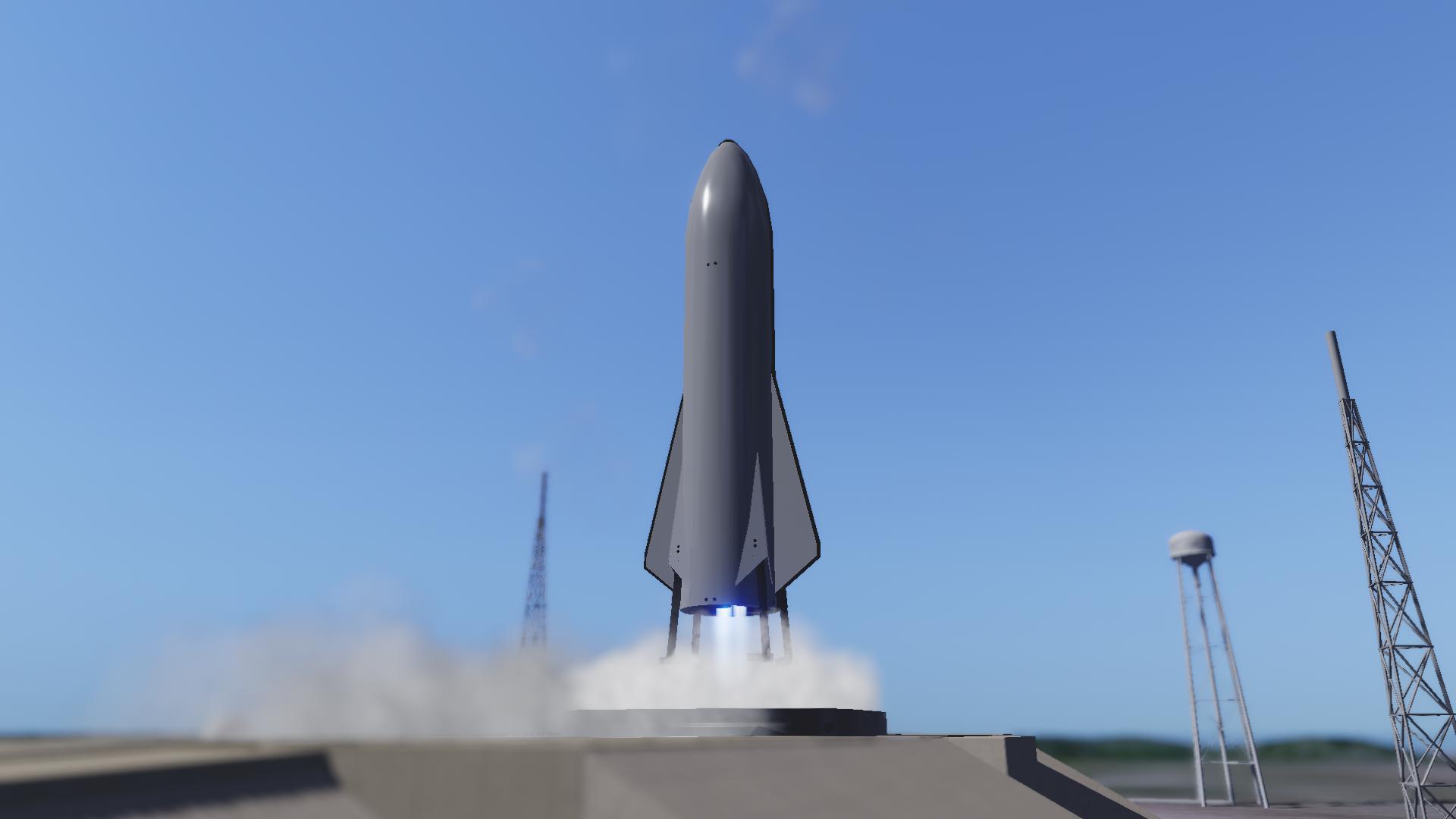Olympus is a class of fully reusable launch vehicles designed and manufactured by Nova Aerospace to replace the Icarus family of rockets as well as competing with SpaceX's Starship and Relativity's Terran R. Olympus is named after the Olympus Mons volcano on the planet Mars. The launch vehicles consists of a BFB (Big Falcon Booster) booster stage and an Olympus spacecraft.
A test vehicle named Bullfrog performed a hop at Nova Aerospace's Elysium Facility. The first prototype of the Olympus spacecraft was launched in 2020, it was meant to test landing and the new Riptide engines. In 2021 a smaller version of the BFB booster named SAB (Small Avocet Booster) was launched into orbit to test the practicality of landing back on the launch pad. The first orbital launch attempt was started in mid 2022, the launch succeeded.
Olympus is 121.7 m high and 17.6 m in diameter, slightly taller than Starship by 1.7 m. Both stages of the launch vehicle have a vast majority of their components entirely 3D printed using SAE 304L stainless steel, including the engines.
A single Olympus can deliver more than 100 t of payload to low Earth orbit in a fully reusable configuration. Olympus can also carry payloads to higher Earth orbits, the Moon, Mars and other destinations in the Solar System. The launch vehicle can be used to launch almost any space payload, instead of being specialized for only one facet of spaceflight.
Both the Olympus spacecraft and the BFB booster are powered by the newly developed Riptide rocket engine, burning liquid oxygen and liquid methane propellants in a full-flow staged combustion cycle. Like Starship, Methane was chosen as Olympus' propellant because it is cheaper, burns more cleanly, and can be produced on Mars via in-situ resource utilization. All Riptide engines are able to fire many times, their nozzles are also regeneratively cooled.
The BFB booster measures 71.5 m tall and houses up to nineteen sea level-optimized Riptide engines as opposed to Super Heavy's thirty-three.
Four 3D printed titanium fins are installed above BFB and controlled by electric motors, powered by batteries. For altitude control at space, BFB uses cold gas thrusters fed by evaporated propellant gases.
The BFB booster carries enough fuel to launch the Olympus spacecraft into a Trans-lunar injection (TLI) and even a Lunar orbit insertion (LOI) in a fully reusable configuration. This removes the complexity of orbital refueling on Mars missions and even on missions beyond Mars in a fully reusable configuration.
Instead of being caught like Super Heavy or landing on a Droneship like Falcon 9 and Icarus 7, BFB would land back on the launchpad without the use of landing legs. This makes the booster instantly ready for another launch. Once in Earth's atmosphere, BFB cuts off 18 of its engines and rely entirely on the single center engine to descend.
The Olympus spacecraft is attached to the top of the BFB booster and is 50.3 m tall. Six Riptide engines are mounted on its bottom. Three are optimized for operating in atmosphere, and the other three are optimized for vacuum operation. It also has two body flaps to slow the vehicle's falling velocity on reentry. Olympus' heat shield is composed from many surface-mounted black tiles with some room to accommodate thermal expansion. They are shaped into squares unlike Starship's and are mounted directly to the spacecraft. These heat shield tiles are able to withstand atmospheric reentry multiple times.
Four large titanium landing legs in triangular pods are installed below the spacecraft. Cold Gas Thrusters are also placed on the spacecraft.
GENERAL INFO
- Created On: iOS
- Game Version: 0.9.802.0
- Price: $592,644k
- Number of Parts: 193
- Dimensions: 122 m x 18 m x 17 m
PERFORMANCE
- Total Delta V: 43.7km/s
- Total Thrust: 148.4MN
- Engines: 25
- Wet Mass: 3.01E+6kg
- Dry Mass: -31,566,256kg
STAGES
| Stage | Engines | Delta V | Thrust | Burn | Mass |
|---|---|---|---|---|---|
| 1 | 19 | 43.7km/s | 101.0MN | 11.2m | 3.01E+6kg |









